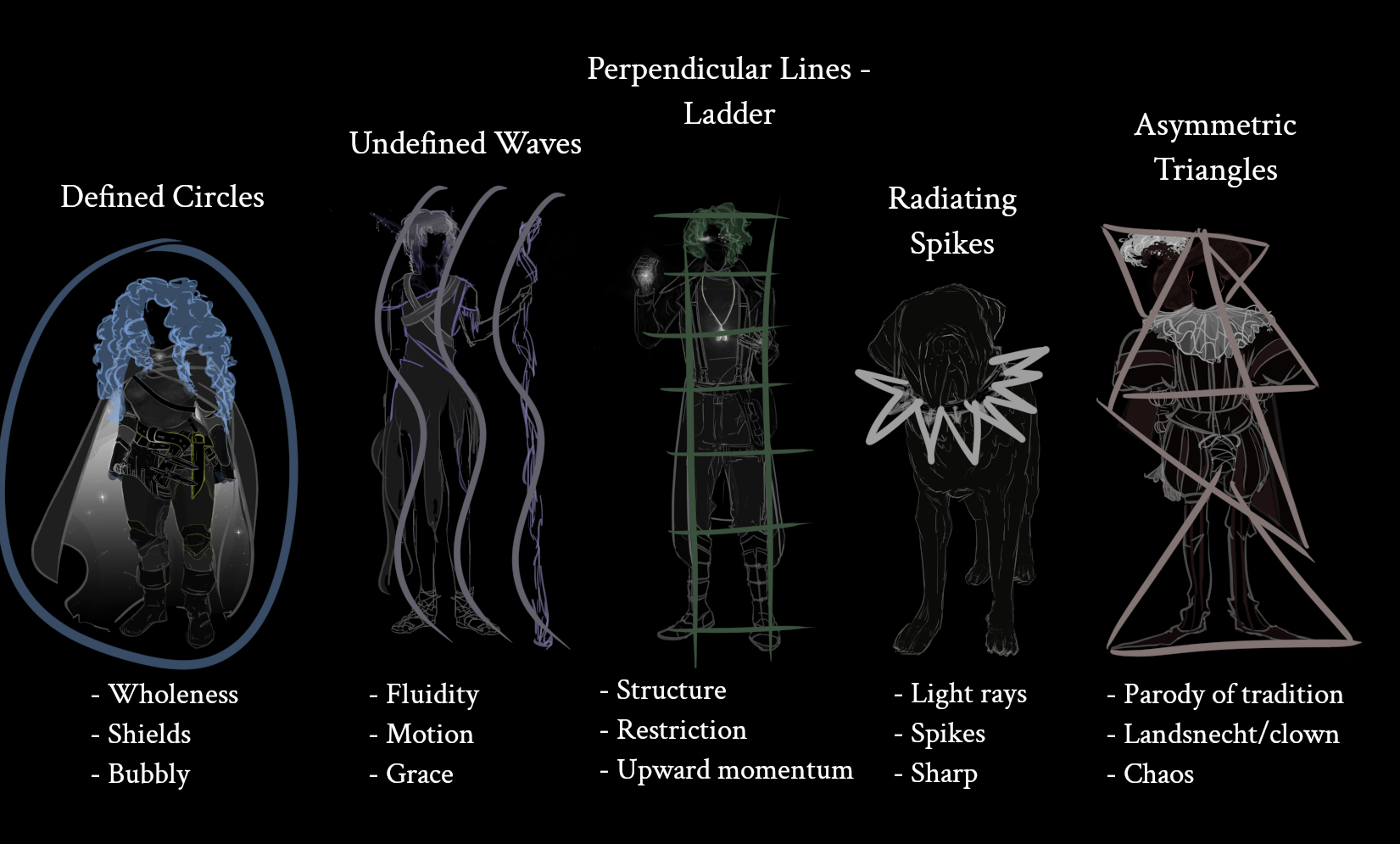In the grand tapestry of human experience, the concept of a horizon serves as a powerful metaphor. It is at once the figurative edge of knowledge, the limit of what we can see, and the invisible point where sky and earth seem to meet. But what happens when the horizon in question lies outside our own cultural frame? Can we truly understand—or even deeply appreciate—those horizons that emerge from entirely different cultural contexts?
This article explores that question with intellectual rigor and lively prose. We’ll examine the nature of culture and cognition, unpack how our background shapes our perception, delve into specific case studies, and ultimately propose ways to engage with foreign horizons in a meaningful way. It’s a journey through philosophy, anthropology, cognitive science, and the art of cross‑cultural understanding—light enough to enjoy, heavy enough to matter.
1. The Concept of Horizon
Let’s begin by clarifying what we mean by the “horizon.” While the literal horizon is a physical line where earth meets sky, the metaphorical horizon is about limits—the limit of knowledge, of vision, of imagination. It’s where the familiar ends and the unknown begins.
- In philosophy, horizons mark the boundary of our conceptual world. Hans-Georg Gadamer, the German philosopher, described understanding as a horizon that opens and shifts when one encounters something new.
- In anthropology and cultural studies, a horizon might be the worldview or lifeways of another culture, previously unseen or incomprehensible to us.
- In cognition, the horizon can represent the mental frame through which we interpret experience—the “cultural lens” through which we see everything.
When we ask “Can we truly understand horizons beyond our cultural context?”, we are asking: can we see and comprehend what lies beyond our cognitive boundary, shaped by our cultural background—and if yes, to what degree? What are the obstacles? What are the methods?
2. Culture as a Cognitive Frame
2.1 The Deep Structure of Culture
Culture is not just the clothes we wear or the food we eat; it is the deep structure that shapes our mental architecture:
- Language doesn’t simply convey thought—it co‑shapes it. The words and grammar of a language canalize how its speakers conceive of time, space, causality.
- Practices and rituals embed cognition: the repeated acts of community life prime certain ways of paying attention, certain values, and certain ways of interacting with the world.
- Symbols and narratives root us in particular cosmologies, moral orders, and expectations.
In short, culture forms the lens through which we perceive horizons. It determines what counts as meaningful, what counts as real, and what counts as possible.
2.2 Cultural Frames and Cognitive Illusions
Because culture shapes cognition, we often assume our own frame is universal. This assumption leads to what we might call “cognitive illusions”: ideas that seem self‑evident because we share them, but would appear strange or even nonsensical to outside perspectives.
For example, consider individualism vs communalism. A culture steeped in individualism may regard personal autonomy as the highest good, whereas a communal culture may place harmony, collective welfare, or relational obligations above the individual. The horizon of what is considered “ethical behaviour” shifts dramatically.
Another example: the posture toward time. In some cultures, time is linear, segmented, scheduled; in others, it is relational, cyclical, fluid. The horizon of “future” and “past” thus appears differently.
This raises the first hurdle: when the horizon lies outside our cultural frame, our cognitive machinery might mis‑see it or filter it without awareness.
3. Understanding vs. Translating Cultural Horizons

3.1 The Myth of Complete Translation
It’s tempting to think of understanding a foreign cultural horizon as simply “translation”: you decode the language, decode the symbols, and you’re done. Unfortunately, this is seldom sufficient.
Metrics of translation presume a shared human basis—a kind of “universal interpreter” in us all. But recent thought in philosophy of language and cultural theory suggests that translation always involves losing something. One culture’s horizon may contain phenomena that do not map neatly onto ours.
For example, consider kinship terms that exist in some societies but not in others. The very category may be alien outside its culture. Translating it into our language often involves approximation, metaphor, or analogy—and we invariably lose nuance.
3.2 Empathy and Interpretation
When we strive to understand a cultural horizon, we engage in two acts: empathy (trying to inhabit another’s perspective) and interpretation (making sense of it using our own conceptual tools). Yet both are fraught:
- Empathy may allow us to feel a bit of the other’s orientation, but it cannot fully override our own cultural preconceptions.
- Interpretation may force the foreign into familiar molds, thereby distorting. We end up seeing not what is, but what we expect.
So there is a constant tension: in trying to approach a foreign horizon we risk either flattening it (assimilation) or exoticizing it (estrangement). True understanding lies somewhere in between—but is that even possible in full?
4. Case Studies: Horizons That Lie Beyond
4.1 The Maasai and the Landscape (of East Africa)
For the Maasai of East Africa, the land is not simply a resource; it is a relational matrix: their cattle graze on it, they walk across it, they hold rituals on it. The horizon of their land‑world is shaped by pastoral movement, communal grazing rights, ancestral spirits tied to terrain, and deep reciprocity with nature.
For an outsider steeped in sedentary, agrarian, or urban culture, this horizon may appear exotic or romantic—“noble pastoral life”—but often the deeper consequences go unseen: the rhythms of movement, the embedded sense of place, the meaning of cattle as social currency, not just economic.
Understanding this horizon means acknowledging that land for the Maasai is not primarily a property title or commodity—it is a social field, a moral theatre, a kin‑making arena.
4.2 The Japanese Sense of Time: Shifting Temporality
In Japan, certain cultural practices reflect temporal horizons that differ markedly from Western norms. The concepts of “ma” (間 – the spatial/temporal interval) or “ichigo ichie” (一期一会 – each meeting, once in a lifetime) indicate that time is not just a linear sequence of hours and minutes but a relational field filled with presence, chance, and possibility.
Compare this with Western time‑discipline (schedules, hourly segmentation, deadlines). The Japanese horizon of time invites mindful presence, subtle transitions, and relational tempo.
To fully understand this horizon, one must dwell not only on the external behaviour—meeting punctually, maintaining silence in a tea ceremony—but on the internal orientation: the interplay of space, pause, and encounter.
4.3 The Sami Reindeer Herding World (of Northern Europe)
The indigenous Sámi people of Northern Scandinavia have a horizon shaped by the migration of reindeer, snow‑ice cycles, and the luminous dance of the aurora. Their world is not defined by the built cityscape of roads and towers but by tundra, seasonal movement, and living with the “other‑than‑human”.
A non‑Sámi observer might appreciate the “nature‑culture” boundary being more fluid here, but may still impose a romantic or conservationist lens: “traditional people living with nature”. That overlooks the full horizon: reindeer herding is not tourism, not leisure—it is a deep ethical, social, and ecological practice with its own knowledge systems.
Understanding this horizon requires us to reshape our assumptions: animals are not property but kin; seasons are not interruptions but coordinate the social world; mobility is the norm, not the exception.
5. What Impedes Understanding?
5.1 Cognitive Bias and Ethnocentrism
Our thinking is habitually centered on our own cultural context. Cognitive biases—confirmation bias, fundamental attribution error, etc.—are intensified when we interpret foreign horizons with our own standards. Ethnocentrism assumes our frame is normative.
This means we may mis‑evaluate or mis‑value foreign horizons: deeming them “less advanced”, “primitive”, or simply “different” without fully grasping their coherence.
5.2 Language and Conceptual Gaps
Every culture has concepts and words that are untranslatable without loss. These “lexical gaps” matter because they point to frames of meaning not shared across cultures.
For example, a concept like the Māori “whakapapa” (genealogy, relationships, ancestry, identity) cannot be rendered fully in English in one word. A translator might use “genealogy” or “kinship network”, but the deeper cultural resonance is lost.
Thus, language itself is a barrier to full understanding: when our conceptual repertoire lacks the tools a culture uses internally, our vision of its horizon remains partial.
5.3 Power Dynamics and Representation
Often, horizons outside our cultural context are framed by unequal power relations: colonization, globalization, cultural appropriation, tourism. Our understanding is mediated by media, museums, travel brochures, and sometimes by academics who may mis‑interpret for local consumption.
Thus, one major impediment is not just mental but structural: we may interact with a foreign horizon through a filter of dominant culture which distorts it.
5.4 The Horizon Shifts as We Engage
Even if we approach another horizon with openness, our own frame changes in the process. We are changed by encounter. Our horizon expands. But that means the original question—is the horizon truly understandable—becomes dynamic. The horizon we once saw was through our old lens; now we view it through a new one.
Therefore, to claim full understanding is perhaps to deny change; to engage is to shift the search.
6. Can We Truly Understand?
6.1 Degrees of Understanding
It might help to think of understanding not as binary (yes/no) but as degrees:
- Surface understanding: seeing parallels, making analogies, grasping narratives outside your culture.
- Contextual understanding: grasping the web of relationships, history, worldview, and values that give meaning in another horizon.
- Embedded understanding: participating in that horizon, not as an outsider but as someone who’s accepted, trusted, lived, and shaped by it.
Most of us—from outside cultures—operate at the first two levels. Embedded understanding is rarely achievable unless we immerse ourselves for long periods, often over generations.
6.2 Humility Is Key
To approach foreign horizons, we must begin with humility: acknowledging that our perspective is partial, provisional, culturally situated. This humility opens the door to curiosity and learning instead of assumption and projection.
6.3 The Role of Dialogue and Reciprocity
Understanding is not unidirectional. It’s relational. We learn foreign horizons best when there is dialogue: when members of that culture speak, teach, and correct our mis‑perceptions. Reciprocity strengthens authenticity.
6.4 Acknowledging Change and Fluidity
Cultures are not static. Their horizons shift—through internal dynamics, globalization, technology, natural change. So to grasp a horizon is to grasp something alive, not fossilised.
Hence, any understanding we gain is time‑bound, partial, evolving. We must adapt, update, unlearn and relearn.

6.5 The Irreducible Otherness
Even with all the above, there remains what we might call irreducible otherness: aspects of a horizon that do not translate, cannot be fully shared, or remain mysterious. And that is not a failure—it is simply the nature of encountering another culture.
The horizon we reach may always be partly opaque. This opacity is not a defect but a dimension of richness.
7. How to Engage with Foreign Horizons Meaningfully
7.1 Read Widely and Critically
Books, ethnographies, narratives from the culture in question equip us with conceptual tools. But read with a critical mind: be alert to power dynamics, representation, insider vs outsider voices.
7.2 Cultivate Immersion, Even Briefly
Travel and direct encounter are invaluable—but they must be undertaken with sensitivity. Seek long stays, local relationships, mentorship from insiders rather than just tourist glances.
7.3 Learn the Language or Concepts
Even basic knowledge of the local language or dialect can open up new perspectives: native categories of feeling, relationship, landscape. These open up the architecture of the horizon.
7.4 Participate in Ritual, Story, Everyday Life
Understanding a horizon means seeing it lived. Attend ceremonies, listen to stories, share meals, sit in conversation. These are the windows into the horizon’s logic.
7.5 Focus on Relations, Not Just Objects
Often we might focus on “objects”—art, artefacts, mountains, symbols—from the foreign culture. But horizons are relational: between people, between the human and the environment, between past and present. Attention to relationships reveals depth.
7.6 Accept Partiality and Opacity
Understand that your grasp will always be incomplete. That’s acceptable. What matters is ongoing engagement, openness, adaptation. The horizon isn’t a puzzle to be solved; it’s a dimension to explore.
8. Implications for Globalized Life
8.1 Intercultural Collaboration
In today’s globalized world, we work, live, and collaborate with people from vastly different cultural horizons. Whether in business, research, or humanitarian work, the ability to engage meaningfully across horizons is a practical necessity.
When we misunderstand a partner’s horizon, miscommunication, misalignment of values, and conflict can follow.
8.2 Ethical Considerations
Understanding is also ethical. If we treat foreign horizons merely as “exotic” or “resources” for our consumption, we replicate colonial dynamics. Genuine engagement means mutual respect, shared benefit, and potential transformation of our own horizon.
8.3 Environmental and Planetary Horizons
Our modern global challenges—climate change, biodiversity loss, migratory crises—require that we understand horizons beyond cultural ones: ecological, planetary, temporal. Indigenous horizons often offer deep-time perspectives and relational frameworks that can sharpen our global response. Engagement with these horizons demands humility and openness.
8.4 Education and Horizon Expansion
Schools, universities, and lifelong learning programs face the task of equipping students to engage with multiple horizons. Not by teaching static “cultural facts” but by cultivating horizon literacy—the ability to recognize one’s own frame, ask critical questions, listen deeply, and adapt cognitively.
9. A Philosophical Reflection: The Horizon as Dialogue
Returning to the concept of horizon in the philosophy of Hans-Georg Gadamer: our horizon is extended when it meets another’s horizon. The process is dialectical: we both receive and give. Our horizon changes.
Thus, when we engage with a horizon beyond our cultural context:
- We don’t retain our old horizon untouched and passively gaze upon the other.
- We merge horizons, not in identity but in an event of understanding: a meeting space where we are changed.
In this sense, to ask “Can we truly understand?” is to ask: Are we willing to be changed by that horizon? If the answer is yes, then we enter genuine engagement.
10. Conclusion: The Horizon Ahead
So what is our answer? Yes—and no. We can approach, appreciate, and partially understand horizons beyond our cultural context—and furthermore our very participation in that engagement expands our own horizon. But we cannot claim total, fully transparent comprehension. There will always remain relational, temporal, linguistic, and conceptual gaps.
But that is not a limitation—it is a feature. The beauty of engaging with another horizon lies in the space of not‑knowing, the stretch of our cognitive and moral fibres, the invitation to growth.
And in a world ever more connected, ever more plural, the skill of horizon‑engagement is not optional—it’s essential.
Let us then step forward: with humility, curiosity, openness—and a willingness to be transformed.























